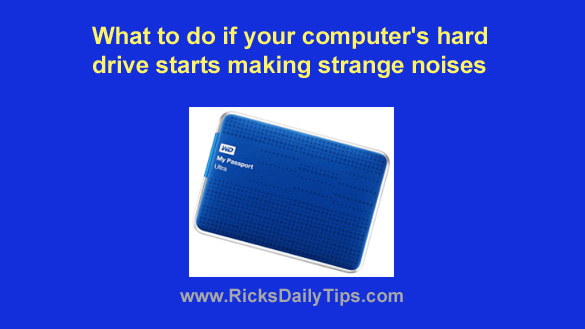 Note: The links in this post are affiliate links.
Note: The links in this post are affiliate links.
Even though solid state drives (SSDs) are beginning to replace spinning hard drives in the marketplace, the majority of computers in use today still use a hard drive for long-term data storage.
Unfortunately, most hard drives will eventually fail, and when they do their owners often lose any irreplaceable data that’s stored on them because they didn’t have a current backup on hand.
This is why I recommend backing up your computer’s hard drive on a regular basis.
Note: Windows users can easily back up their machines by creating a simple System Image Backup.
Mac users can back up their drives using the Time Machine utility.
The above being said, few people create a new backup every day, and I don’t really push that for practical reasons.
A less frequent backup schedule should be fine unless you create important (and irreplaceable) new data on a daily basis.
Just be aware that should your hard drive go belly-up days or weeks after your last backup was created, you’ll lose all the new files (or changes to old files) that have been created since the last backup date.
Luckily, a failing hard drive will often warn you that it’s getting ready to stop working by beginning to make odd noises that it has never made before.
These noises can vary quite a bit, but they usually include some type of clicking, clunking, whining and/or whirring sounds.
If your hard drive ever starts making a strange noise or fails a reliability check, you need to immediately do the following:
1 – Stop what you’re doing!
2 – Save any unsaved work, preferably to a USB flash drive or external hard drive.
3 – Create a backup of the computer’s hard drive.
Note: (Instructions for creating a System Image Backup can be found here for Windows 11 and here for Windows 10.)
If you have a Mac you’ll find instructions right here.
4 – Replace the failing drive with either a new hard drive or a new SSD.
5 – Restore the backup you created in step 3 onto the new drive.
When I say to do these things immediately, I do mean immediately – as in right now!
Don’t finish the task you’re working on, and don’t wait until tomorrow. Do it right now!
Why create a backup right away even though the computer still seems to be working just fine?
Once a hard drive starts making noises it can fail at any time. It could last another 10 seconds or another 10 weeks, but there’s really no way to know for sure.
Truth be told, it can take a while to back up a hard drive and you just might need every second of life that’s left in a failing drive to get it completely backed up.
Bottom line: It’s important to get into a routine of creating a fresh backup of your computer’s hard drive on a regular basis. For example, I try to create one every Saturday.
Of course you’ll need an external USB hard drive on hand to hold your backups. Luckily, you can pick one up for as little as $50 at your favorite local or online electronics retailer.
That’s all there is to it. Just remember that a little preparation now can help you avoid a ton of grief later!